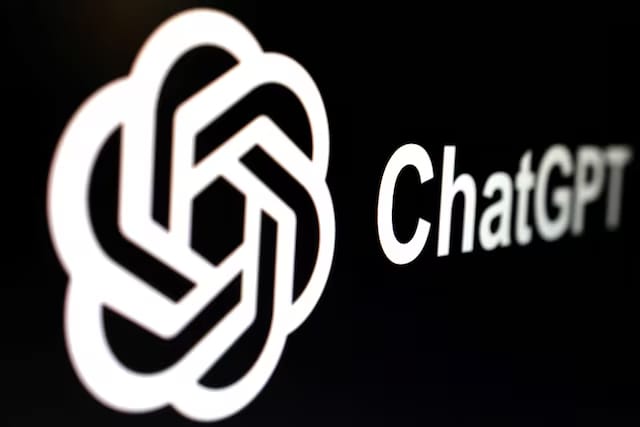- TheDownload.AI
- Posts
- 71st Edition Download
71st Edition Download
ChatGPT is testing built-in payments, LTXV is live-streaming AI video, and Microsoft saved half a billion by automating support.
Clarity Beats Hustle
I talk to job seekers every day—from burned-out engineers to high-performers secretly hating their “good” jobs. And one thing’s always the same: they don’t know where they’re going.
They’re refreshing job boards. They’re tweaking bullet points. They’re doing everything except the one thing that matters most:
Deciding what a great job actually looks like for them.
Not what sounds impressive. Not what pays $20K more. Not what their parents or past manager would be proud of.
You need to decide: what do you want out of work, really?
Let’s break this down.
First: clarity doesn’t come from thinking harder. It comes from paying attention.
Go back to the moments when you were on fire.
That project that consumed your brain in the best way.
That time you stayed late, not because you had to, but because you wanted to.
That moment when someone said, “I didn’t get it until you explained it.”
These aren’t just memories. They’re signals.
Write them down. No need to overanalyze yet. Just stack the dots.
What kind of work were you doing? Who were you working with? What tools or systems were you using? What felt right about it?
Now compare those to the job you have, or the job you’re applying to. If they don’t line up, that’s your red flag.
Second: most resumes lie.
Not because you’re dishonest.
Because they’re built to look like they’re one-size-fits-all.
But you’re not. You have specific strengths. Specific values. Specific types of environments where you thrive.
A good resume doesn’t list everything you’ve done.
It shows the right things for the right job.
That’s how hiring managers make decisions. They’re not reading between the lines. They’re skimming for clues:
“Does this person solve the kind of problems we have?”
“Do they care about the same things we care about?”
“Will they make my life easier or harder?”
If your resume doesn’t answer those questions clearly, you’re not getting the callback. Not because you aren’t qualified, but because your resume didn’t show how you actually fit.
So here’s the move:
Get radically clear on the work that energizes you.
Understand what you bring to the table that others don’t.
Translate that into language a hiring manager can immediately get behind.
Your resume should be a sharp signal, not a wall of noise.
And if you’re stuck wondering how even to start that rewrite, I built something for you.
It’s free. It scans your resume and tells you, in plain English, what’s helping you, what’s hurting you, and what to fix.
It’s not magic. But it is a lot more helpful than staring at a blank Google Doc.
Start with clarity. Everything else gets easier.
What do you think of this topic? |
This Week in AI:
No jargon, no filler—just the biggest AI developments worth knowing right now. Perfect for quick industry insights, so you can skip the buzzwords and get straight to the good stuff. Let’s dive into this week’s AI shake-ups, just as promised:
OpenAI is quietly testing a native checkout system inside ChatGPT—hinting at a platform shift from chatbot to marketplace. Meanwhile, Lightricks dropped a huge update to LTXV, its open-source AI video model that now generates 60-second clips in real time. And Microsoft? It just saved $500M last year by replacing human support reps with AI.
Let’s get into it.
In This Issue:
ChatGPT Tests Built-In Checkout → OpenAI wants to own the transaction, not just the conversation. (link)
LTXV Streams Real-Time AI Video → 60-second, editable video, streamed live, no waiting. (link)
Microsoft Saves $500M With AI Support → AI in the call center just became an enterprise strategy. (link)
TL;DR:
OpenAI is working on a payment and checkout system within ChatGPT, according to a Financial Times scoop. Some users are already seeing test integrations for direct in-chat purchases, likely aimed at GPTs, plugins, or tools powered by API calls.
Our Take:
This isn’t a Stripe clone. It’s OpenAI trying to make ChatGPT the browser and the point of sale. If the system works, you won’t need to leave ChatGPT to buy a course, book a call, or access a premium GPT. The endgame? A full-stack ecosystem where discovery, interaction, and payment all live in one interface. If you sell digital products or services, this is the platform shift to watch.
TL;DR:
Lightricks just released a major upgrade to its open-weight LTXV model: live, real-time video generation up to 60 seconds. The model streams output as it's generated, starting instantly, with the ability to change prompts, poses, depth, and style mid-stream.
Our Take:
AI video finally feels real. Most models still render 4-second clips in minutes. LTXV gives you a live feed, you direct the scene as it renders, and it plays out continuously. This isn’t just another research demo. It's the start of a new workflow where AI video becomes interactive content, not just generated output. And it's open source.
TL;DR:
Microsoft saved $500 million in 2024 by automating customer support with AI. The bulk of savings came from reduced call times, fewer escalations, and AI triaging millions of support tickets.
Our Take:
Forget vague promises. This is a real, bottom-line number—and it shows where enterprise AI is headed: quiet cost-cutting at massive scale. If you’re building for ops, CX, or internal tools, this stat is a weapon. Every CFO now has a reason to greenlight AI.
🚀 Thank you for reading The Download
Your trusted source for the latest AI developments to keep you in the loop, but never overwhelmed. 🙂
*For sponsorship opportunities, email [email protected]



Reply